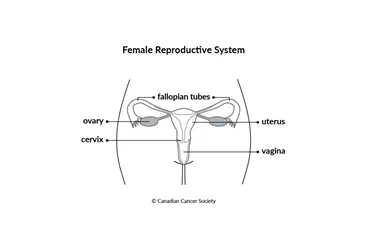What is vaginal cancer?
Vaginal cancer starts in the cells of the vagina. A cancerous (malignant) tumour is a group of cells that can grow into and destroy nearby tissue. It can also spread (metastasize) to other parts of the body.
The vagina is part of the female reproductive system. It is a muscular tube that goes from the cervix to the outside of the body. The cervix is the lower, narrow part of the uterus, or womb. The cervix opens into the vagina. Blood and tissue (menstrual fluid) pass out of the body through the vagina. During vaginal childbirth, the baby passes through the vagina.

Changes to cells of the vagina can cause precancerous conditions. This means that the abnormal cells are not yet cancer, but there is a chance that they may become cancer if they aren’t treated. The most common precancerous condition of the vagina is vaginal intraepithelial neoplasia (VAIN). Most of the time, VAIN is successfully treated and doesn't develop into cancer.
But in some cases, changes to vaginal cells can cause vaginal cancer. Most often, vaginal cancer starts in flat, thin cells called squamous cells. The squamous cells make up the lining of the vagina. This type of cancer is called squamous cell carcinoma (SCC) of the vagina. Cancer can also start in the glandular cells, which make mucus. This type of cancer is called adenocarcinoma of the vagina.
Other types of vaginal cancer can also develop, but they are less common. Melanoma of the vagina starts in melanocytes, which are cells that make pigments. They are the cells that give colour to your eyes, skin and hair. Another type of cancer can start in the muscle or connective tissue cells in the vagina. This type of cancer is called sarcoma.
Other types of cancer can spread to the vagina, but this is not the same disease as
The vagina
Cancerous tumours of the vagina
Precancerous conditions of the vagina
Your trusted source for accurate cancer information
With support from readers like you, we can continue to provide the highest quality cancer information for over 100 types of cancer.
We’re here to ensure easy access to accurate cancer information for you and the millions of people who visit this website every year. But we can’t do it alone.
Every donation helps fund reliable cancer information, compassionate support services and the most promising research. Please give today because every contribution counts. Thank you.
